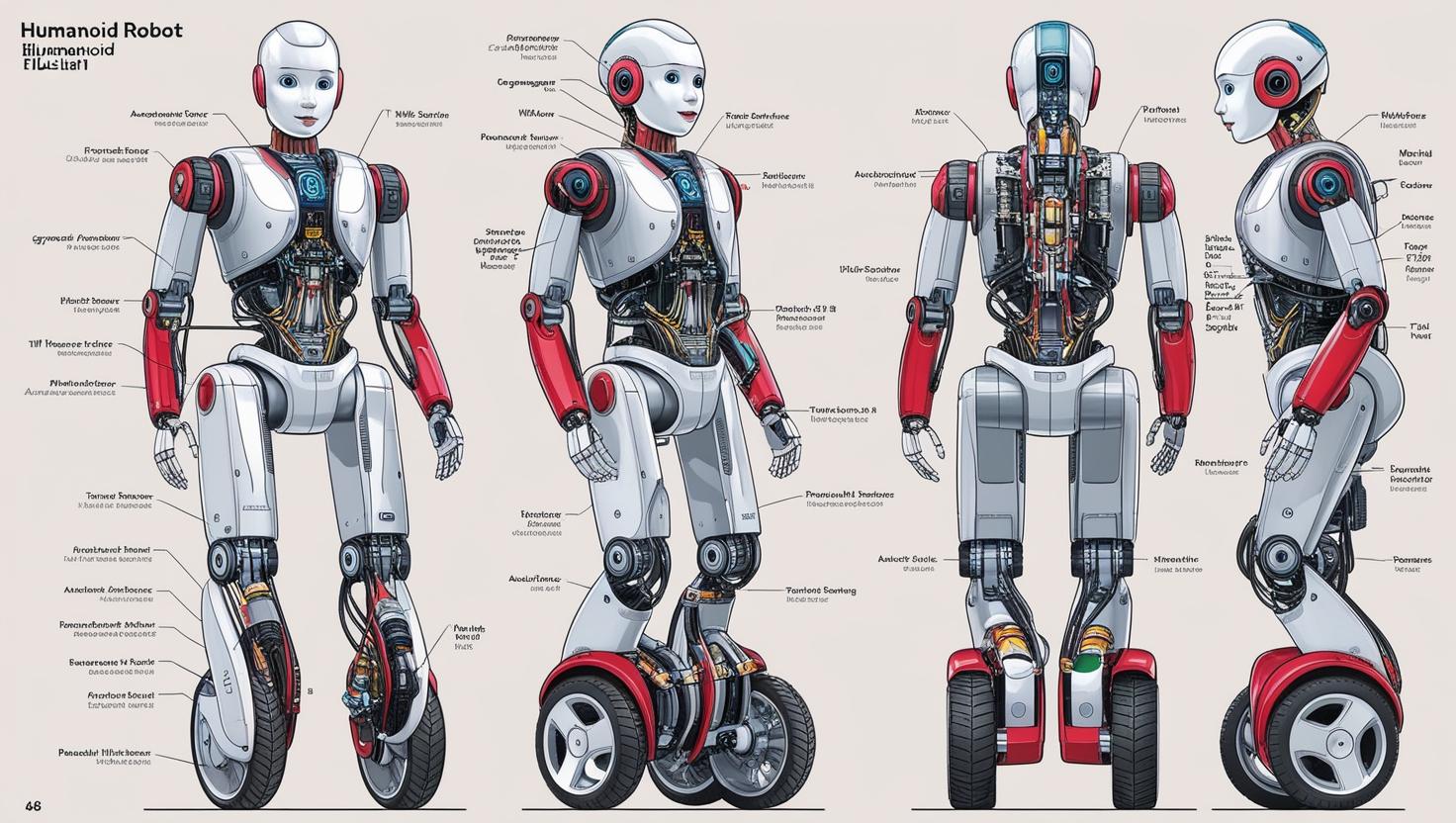AI-powered humanoid robots are revolutionizing the way humans interact with machines. Unlike traditional automation systems that are task-specific and rigid, humanoid robots are built to adapt, learn, and communicate naturally. Leveraging advancements in artificial intelligence—particularly natural language processing, machine learning, and computer vision—these robots are capable of interpreting speech, understanding emotions, and navigating dynamic environments. This evolution is enabling seamless collaboration between humans and robots across a wide range of industries.
Commercial Rollout Across Key Sectors
What was once limited to research labs and concept videos is now entering real-world operations. In manufacturing and logistics, humanoid robots are increasingly deployed to perform tasks like material handling, assembly, and inspection, particularly in environments where flexibility and adaptability are crucial.
Retail and hospitality sectors are also embracing humanoid robots for customer service roles. These robots can greet visitors, provide product information, and assist with inquiries, offering a unique and futuristic customer experience. Meanwhile, educational institutions and healthcare providers are exploring their use as interactive tutors and therapy assistants, where emotional intelligence and communication are essential.
Download PDF Brochure @ https://www.marketsandmarkets.com/pdfdownloadNew.asp?id=99567653

Intelligence Enables Human-Like Collaboration
At the heart of this transformation is artificial intelligence. Today’s humanoid robots are designed not just to move like humans, but also to think, learn, and respond like them. They can engage in multi-turn conversations, read non-verbal cues, and improve their performance over time through machine learning. This makes them highly effective collaborators in environments where adaptability, empathy, and communication matter as much as precision and efficiency.
Global Innovation and Competition
Around the world, companies and governments are investing heavily in humanoid robotics. The focus ranges from improving physical capabilities—such as balance, dexterity, and mobility—to enhancing software intelligence that allows for decision-making and emotion recognition. Startups and tech giants alike are racing to build commercially viable models that can operate safely and autonomously in real-world settings.
Some organizations are targeting mass production, aiming to bring down the cost of humanoid robots and make them accessible to more industries. Others are focused on developing open-source platforms to accelerate innovation and cross-border collaboration.
Market Outlook and Growth Potential
The global humanoid robot market is expected to grow from USD 2.92 billion in 2025 to USD 15.26 billion in 2030, with a CAGR of 39.2%. The global humanoid robot market is poised for major growth due to modern research that has evolved humanoid robot technology to the point where these robots can determine actions through sensor-based data processing. Declining hardware costs, rapid advancements in AI, and growing labor shortages across sectors are creating the perfect environment for these machines to thrive.
Forecasts suggest that millions of humanoid robots could be operating in commercial environments by the 2030s. They are set to become essential in logistics, customer service, healthcare, education, and even personal assistance, fundamentally changing how we work and live.
Challenges on the Road Ahead
Despite their promise, humanoid robots still face several hurdles. High development and deployment costs, concerns over safety in unstructured environments, and ethical questions around job displacement and human-robot relationships remain significant. There is also a need for regulatory frameworks to ensure the responsible deployment of these advanced machines.
In addition, building robots that can truly match human capabilities—both physically and emotionally—remains a complex engineering challenge. However, with continued investment and cross-disciplinary collaboration, these barriers are steadily being addressed.
The Future of Human-Machine Collaboration
Humanoid robots powered by AI are no longer science fiction—they are becoming part of the workforce, classrooms, clinics, and homes. As they continue to evolve, the nature of human-machine collaboration will shift from command-based interaction to intuitive partnership.
The next decade will likely see a world where humans and humanoids work side by side—not just for efficiency, but for enhanced quality of life, better service delivery, and more meaningful experiences.
FAQ: AI-Powered Humanoid Robots and Human-Machine Collaboration
1. What are AI-powered humanoid robots?
AI-powered humanoid robots are machines designed to resemble and interact like humans, equipped with artificial intelligence technologies such as natural language processing, computer vision, machine learning, and real-time motion control. They can understand speech, interpret emotions, and perform tasks in dynamic environments alongside humans.
2. How do humanoid robots enhance human-machine collaboration?
These robots go beyond automation by engaging in intuitive, human-like interaction. They can learn from human behavior, adapt to new tasks, respond to verbal and non-verbal cues, and collaborate in shared workspaces—making them ideal for customer service, healthcare, education, logistics, and manufacturing environments.
3. Which industries are adopting humanoid robots the most?
Key industries include:
- Manufacturing and logistics – for physical tasks like sorting, transporting, and assembly
- Retail and hospitality – for customer service and guest interaction
- Healthcare – for elderly care, therapy, and medical assistance
- Education – as interactive tutors or learning companions
- Security and defense – for patrol, surveillance, and hazardous operations
